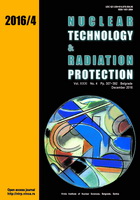
STUDY ON THE COEFFICIENT OF VARIATION IN INDIAN PERSONNEL MONITORING SYSTEM

Vol.
XXXI, No. 4, Pp. 307-392
December 2016
UDC 621.039+614.876:504.06
ISSN 1451-3994
Pages: 388-392
Authors: Sneha Chandrasekhar, Suresh M. Pradhan, Madhumita Bhattacharya, Ratna Pradeep, and Debabrata DattaAbstract
The primary parameters for testing an individual monitoring system are standard deviation and the coefficient of variation. The International Electrotechnical Commission (IEC) standard 62387-1 recommends testing the coefficient of variation of dosemeters for various doses because the acceptable coefficient of variation changes with the dose level. However, for dose quantity
Hp(10), i. e. doses greater than 1.1 mSv, the acceptable limit is 5 % and remains unchanged up to the highest dose in the measurable range. This study was carried out to confirm whether the same is followed in the Indian personnel monitoring system when measuring Hp(10) and also in order to study the variation in the coefficient of variation with a given dose. It was observed that even if the coefficient of variation at doses between 0.1 mSv and 1.1 mSv is lower than the IEC requirement, at higher doses, the same may not be true. In routine monitoring, since the anticipated doses are less than 1 mSv, a monitoring system which performs better than the IEC requirement at these levels of doses is an advantage. However, good performance at said dose levels does not naturally indicate good performance at higher doses.
Key words: coefficient of variation, personnel monitoring, India
FULL PAPER IN PDF FORMAT (245 KB)